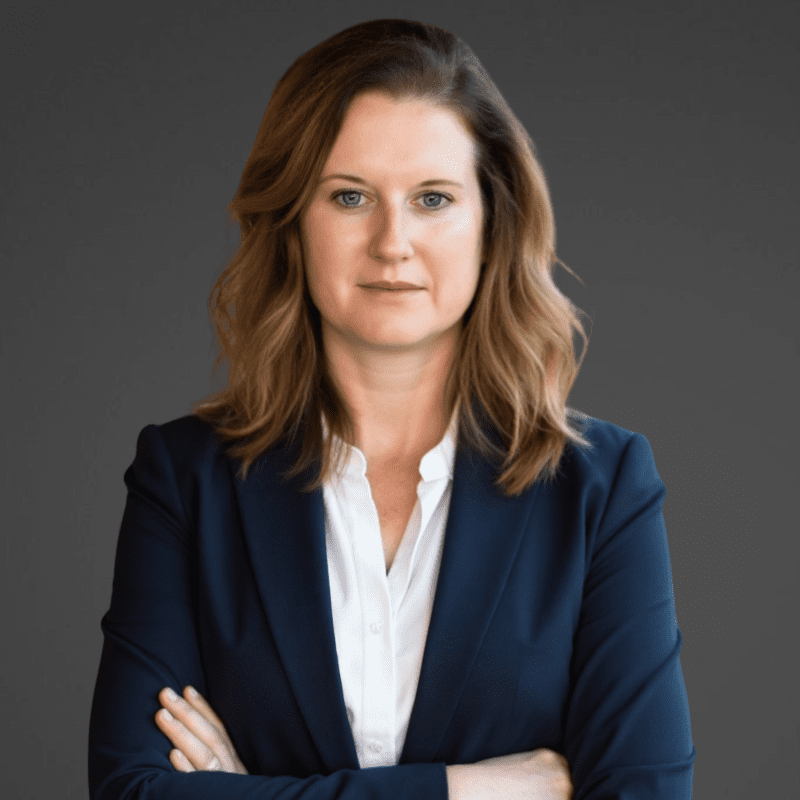What Is A Special Purpose Acquisition Company (SPAC)?
This is the first in a series of Practus notes about SPACs (special purpose acquisition companies). In this Part we will briefly describe what a SPAC is and lay out a basic timeline that will illustrate the features that have caused SPACs to play an increasing role in helping loss-making growth companies go public and giving their investors an exit opportunity. We have also put together a glossary of key SPAC-related terms.
SPACs In A Nutshell
Sponsors form a corporation with modest cash investment. This corporation, a SPAC, promptly prepares and files a registration statement on Form S-1 under the Securities Act of 1933 (the “1933 Act”) and completes an underwritten public offering of its shares. The SPAC, now a company reporting under the Securities and Exchange Act of 1934 (the “1934 Act”), then searches for a private Target Company to acquire by reverse merger, a transaction known as a de-SPAC merger. After the completion of the de-SPAC merger, the Target Company has become a publicly traded reporting company. The owners of the SPAC after the de-SPAC merger are a combination of: (i) the SPAC sponsors; (ii) those who buy listed shares in the SPAC IPO; (ii) existing shareholders of the Target Company; and (iii) institutional investors who purchase public equity at the time of the de-SPAC merger in a PIPE (public investment in public equity) transaction. After the de-SPAC, each owns shares in a company listed on a public stock exchange, giving them potential liquidity (subject to contractual “lock-ups” and limitations based the de-SPAC continuing to be a “shell company”—more on that later). Target Companies typically can claim status as “emerging growth companies” (EGCs) under the Jump Start our Business Startup Act (“JOBS Act”), freeing them from certain accounting and reporting burdens of more established public companies.
The SPAC IPOs In More Detail
What makes a SPAC interesting for a potential sponsor (usually private equity investors, former senior managers of operating businesses and asset managers) is what is called “the promote.”
The promote is the amount of equity that sponsors get for their initial cash investment. Here’s how it works. Sponsors invest a nominal amount of cash (usually $25,000 plus additional money raised privately that is used to pay underwriters’ fees and ongoing expenses) and in exchange the sponsors receive 20% of the equity of the SPAC upon completion of the SPAC IPO. This rate of return (9 to 1 is typical) is subject to some risk as will be explained below. Sponsors also purchase private placement warrants priced “out of the money” (typically $11.50 per share when the unit price in the SPAC IPO is $10 per share) so that the holders receive a pay-off opportunity only if the stock appreciates after the de-SPAC merger. The proceeds of this private placement are used to fund offering expenses of the SPAC IPO.
The public investors in the SPAC purchase units consisting of one share of stock in the SPAC and a warrant to purchase a fraction of a share that are priced similarly but often not precisely identically as the sponsor’s warrants. The difference between the units purchased by investors in the IPO and stock and warrants issued to sponsors’ is that the investors in the IPO have the right to redeem their units for precisely the same amount of money as they invested. The math of SPAC IPOs is surprisingly uniform. Sponsors invest $25,000, the SPAC IPO results in the sale 20 million redeemable common units to public investors at $10 per share. Upon completion of the IPO, the sponsors receive shares equal 20% of the common stock. Neither the shares issued to the sponsors nor the private placement warrants they purchase are redeemable. The SPAC then holds the approximately $200 million in net proceeds of the IPO in a Trust so the public investors have some confidence that there is money available to fund the redemption of their shares. This structure is what allowed SPACs to avoid the problems that plagued earlier “blank check” companies that fell out of favor with regulators and investors (unlike earlier deals, SPACs are designed not to issue “penny stock” which under the SEC’s rules could not be traded before acquisition of a Target Company).
The steps for achieving a SPAC IPO are familiar to those having experience with the typical underwritten public offering. Sponsors hire lawyers and accountants: the lawyers form the SPAC; and the accountants prepare relatively simple audited statements are prepared to describe a company with no significant assets other than cash in the Trust. Then the sponsors choose an investment banking firm to act as underwriter of the IPO. Underwriters of SPAC IPOs typically are paid a 2% to 2.5% fee (called an “underwriters’ discount”) and an additional 3.0 % only if a de-SPAC transaction occurs. These features make a SPAC IPO a bit less expensive than a traditional IPO. A registration statement for a SPAC IPO can be filed in less than a month from kick-off. The whole process can take as little as 9-weeks from kick-off to close. This compares favorably for a traditional IPO which typically takes 16 weeks or more from start to finish. The SEC review process for a SPAC IPO is the same as for a typical IPO. SEC staff target to complete its initial review within 30 days, which typically results in the issue of comments that result in amendments to the registration statement filed on a rolling basis over the following weeks until the staff agrees the registration statement can be declared effective. The scope of SEC comments and scale the required changes in a SPAC IPO are often less than a typical IPO. In the end, the real source of the time savings of a SPAC IPO over a traditional IPO is in the simplicity of the completing accounting, the ease of drafting the disclosure documents, the relative simplicity of disclosure and the reduced scope of due diligence, all due to the fact that there is no operating business in the SPAC at the time of the SPAC IPO.
The de-SPAC Merger In More Detail
Typically, SPAC charter gives sponsors between 18 and 24 months to complete a second transaction, the de-SPAC merger, or hand back the money the common stockholders paid in the SPAC IPO. The de-SPAC merger is accomplished by a reverse merger of an operating company into the SPAC. The sponsors must obtain shareholder approval from the SPAC shareholders (as well as from the shareholders of the Target Company), requiring that definitive proxy materials to be filed with the SEC. As is most often the case, the Target Company shareholders will receive SPAC equity as merger consideration that is also simultaneously registered under the 1933 Act using Form S-4. Mergers registered on Form S-4, unlike an IPO, must contain pro forma financial statements for the merged company. The private litigation safe-harbor protections available to an existing public company using financial projections in connection with a merger is a big advantage for relatively new companies with tremendous growth prospects but little revenue.
The IPO investors may redeem their SPAC shares regardless of whether they vote to approve the merger with the Target Company. This means that the transaction must be structured to anticipate that redemptions will limit the amount of cash available to pay as part of the agreed merger price or to be used by the Target Company business for expansion. This gap is filled by bringing in new cash in the form of equity sold through a PIPE transaction. The typical SPAC Target Company is valued in the range of $0.75 to $1.00 billion, meaning that the size of the PIPE transaction is often quite large compared to the SPAC IPO. The merger agreement typically contains conditions to benefit the Target Company’s investors that specify a minimum amount must be raised in a PIPE transaction and a maximum amount that can be paid out to SPAC investors in redemptions.
The SEC reviews and approves the proxy materials and any S-4 registration statement used to register shares delivered as merger consideration. SEC staff will scrutinize these filings and their comments on disclosure and financials are typically heavier than at the SPAC IPO stage. Shareholder votes in favor of the merger must be solicited and obtained. The de-SPAC typically takes from 3 to 7 months from announcement to close of the transaction. Within 4 business days after close of the de-SPAC merger and the Target Company is public it files a “Super 8-K” including everything required under Form 10 that had not already been included in the SPAC’s previous filings with the SEC. Now public, the Target Company’s system of internal controls over financial reporting (ICFR) must satisfy Sarbanes-Oxley (SOX) requirements in time for filing of its next periodic report (45 days from the end of the next period for a 10-Q and 90 days for a 10-K) even if its status as an EGC makes auditor attestation of ICFR unnecessary.
Sponsors and investors in the Target Company typically agree to longer lock-up periods than issuer insiders in traditional IPOs. Normally, SPAC sponsors agree that they will not sell their shares in the secondary market for one year after filing of the Super 8-K. De-SPAC’ed Target Companies also remain during this one-year period subject to restrictions that apply to “shell companies” including prohibitions on use of “free writing” prospectuses in road shows and rules requiring full SEC review of the S-3 registration statements used in connection with secondary and follow-on offerings.
There are numerous tax-planning variants, such as employing a variant of the UP-C structure applied to SPACs called an “UP-SPAC”, to address the need for Sponsors and Target Company investors to maintain ownership through flow-through entities like limited partnerships and limited liability companies. Also different structures are used when forming the SPAC depending on whether the sponsors decide to invest through off-shore vehicles. These tax planning considerations are complex and are beyond the scope of this summary.
Contact Practus
Please talk to one of our financial services lawyers at Practus LLP to make sure that your investment methodologies and your management processes are optimized with current regulation standards. Our experienced and the knowledgeable team is here to help you navigate these choppy waters and help you develop cost-effective solutions.








